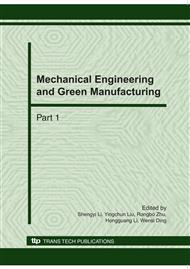p.404
p.410
p.417
p.422
p.429
p.435
p.440
p.446
p.451
The Interaction between a Dislocation and Circular Inhomogeneity in 1D Hexagonal Quasicrystals
Abstract:
The interaction between a dislocation and circular inhomogeneity in 1D hexagonal quasicrystals is investigated. By using the complex potential method, explicit solutions of complex potentials are obtained. The image force acting on the dislocation are also derived. The results show that the interface attracts the dislocation inside both the matrix and the inhomogeneity under most condition. The attraction increase with the increase of the elastic constant of phason field and the phonon-phason coupling elastic constant.
Info:
Periodical:
Pages:
429-434
Citation:
Online since:
October 2010
Authors:
Keywords:
Price:
Сopyright:
© 2010 Trans Tech Publications Ltd. All Rights Reserved
Share:
Citation:


